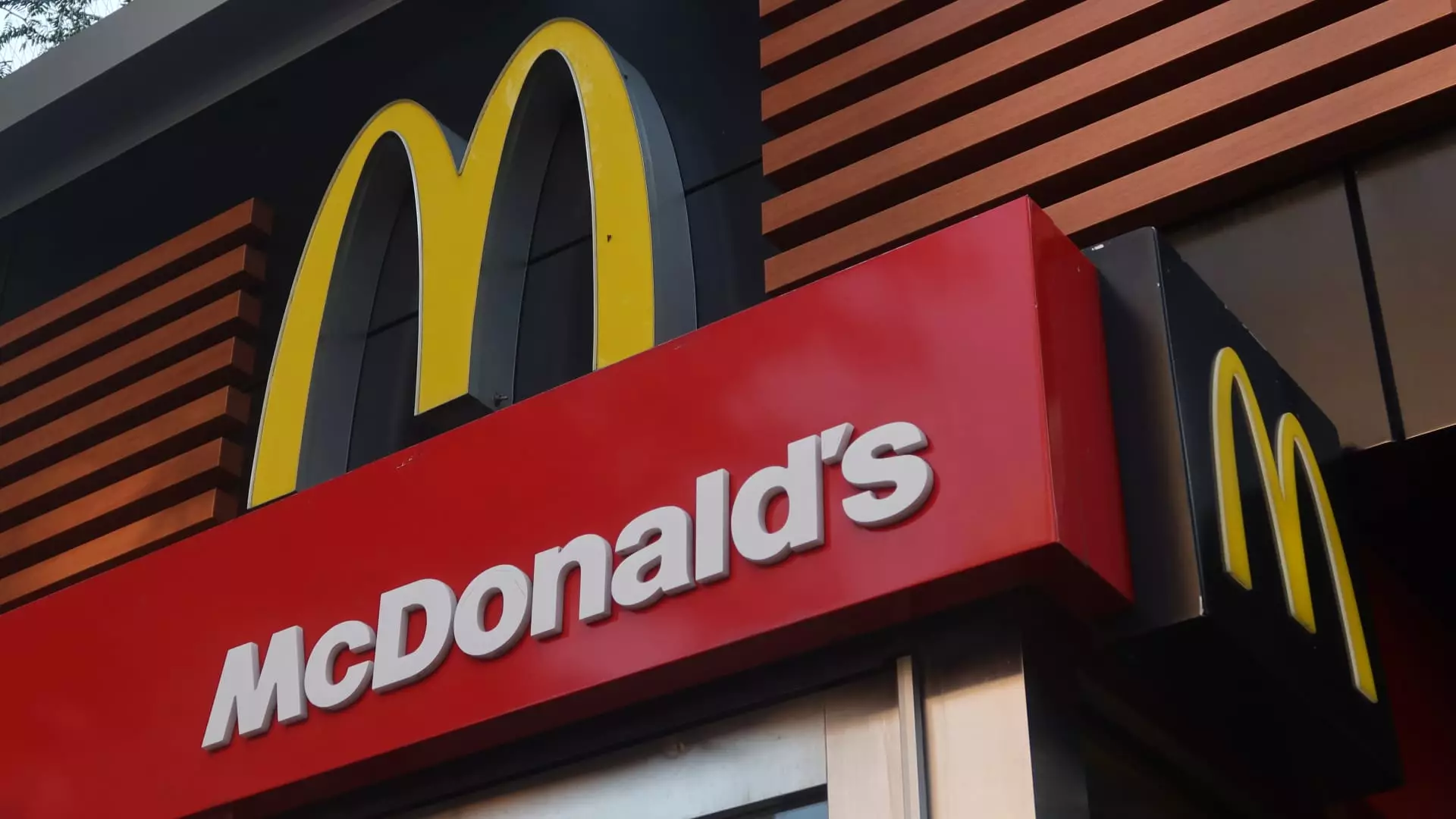McDonald’s recent financial report might seem like a victory on the surface, with earnings surpassing analyst expectations and promising signs of a rebound. The company’s surge in revenue, driven by strategic promotions and a focus on value, paints a picture of resilience in an otherwise bleak economic landscape. Yet, beneath this veneer of success lies a troubling reality: the low-income consumer—the very backbone of McDonald’s core customer base—is stumbling through an economic minefield. This is not just a fleeting setback but a systemic issue that questions the long-term sustainability of fast-food giants like McDonald’s in a fragile economy.
While the company reports impressive numbers, such as a 5% revenue increase and a notable jump in same-store sales, it struggles to address the root cause: the declining purchasing power of America’s most vulnerable households. The CEO’s acknowledgment of “bifurcated consumer base” reveals a troubling divide. The thriving middle and upper-income consumers seem to be unaffected, or perhaps even benefiting from an economic upturn, while low-income families are retreating from dining out altogether. This is not merely a matter of marketing or menu innovation; it is a clear sign of an economic polarization that threatens the social fabric and, consequently, the very foundation of businesses dependent on everyday consumers.
Promotions and Price Slashes: Short-Term Fix or Symptom of Deeper Issues?
The company’s reliance on promotional offers like the $5 meal deal and the returning Snack Wraps echoes a frantic attempt to maintain relevance in a contracting market. These deals may boost quarterly numbers, but do they address the underlying issue—poverty and economic insecurity? When consumers’ budgets are stretched thin, temporary discounts only serve as bandages, not cures. McDonald’s casual approach to affordability indicates a reactive strategy rather than a proactive solution to economic inequality.
The launch of the new McCrispy Chicken Strips and tie-ins with pop culture moments like the “Minecraft” movie are savvy marketing moves, yet they seem disconnected from the real needs of families who must make difficult choices daily. If McDonald’s truly understands its low-income customers, it would prioritize systemic affordability measures—subsidized pricing, healthy options at accessible prices, and community-focused initiatives—rather than relying solely on marketing gimmicks. The fact that these companies are still debating how to make core menu items more affordable suggests a failure to recognize the economic distress many face.
International Success: Easier Markets vs. Domestic Challenges
While McDonald’s international markets are reporting respectable growth, the reasons behind this are telling. Countries like Japan, China, the UK, and Canada see gains partly because their markets are less saturated or less competitive, allowing McDonald’s to stand out by offering perceived value. This contrast underscores a harsh irony: McDonald’s is thriving internationally where consumers may be more willing or able to spend, while in the U.S., the economic squeeze has driven core customers away.
This discrepancy exposes the fallacy that fast-food success is solely about product offerings; it is fundamentally intertwined with economic conditions and societal inequality. When the middle class stabilizes and the low-income population shrinks in their dining out habits, it’s a portent of deeper economic malaise that the company’s leadership seems to underestimate or dismiss. The international growth figures should serve as a cautionary tale: unless McDonald’s adapts to the realities of economic hardship at home, its long-term future in the U.S. remains uncertain.
Deception in Prosperity: The Illusion of a Recovery
The recent financial results seem optimistic, yet they are, in many ways, a façade. Growth fueled by short-term promotions and temporary upticks in sales mask a more significant issue—an economy that continues to erode the purchasing power of the most vulnerable. Market analysts and corporate executives appear to be lulled into a false sense of security, focusing on immediate quarterly gains rather than addressing fundamental economic disparities.
The company’s cautious outlook for the second half of the year and the expectation of easier comparisons with past setbacks do little to dispel the underlying reality: economic recovery is uneven and painfully slow for those who need it most. If anything, these figures highlight the disparity between corporate metrics and societal well-being. McDonald’s, as a reflection of American capitalism, needs to confront the uncomfortable truth that for many of its customers, eating out is no longer an affordable, everyday activity—a sign of widening inequality that threatens the social contract and the sustainability of the fast-food model itself.

